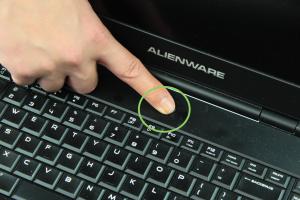Effortless Cleaning: Safe Techniques for Under Laptop Keyboard Key Maintenance

-
Quick Links:
- Introduction
- Importance of Cleaning Under Keyboard Keys
- Essential Tools and Materials
- Step-by-Step Guide to Cleaning
- Case Studies and Real-World Examples
- Expert Insights on Keyboard Maintenance
- Statistical Data on Keyboard Hygiene
- FAQs
- Conclusion
Introduction
The laptop keyboard is often one of the most used components of your device. Over time, dust, crumbs, and other debris can accumulate under the keys, affecting not just the aesthetics but also the functionality of your laptop. Cleaning under your laptop keyboard keys might seem daunting, but with the right techniques, you can do it safely and efficiently. In this article, we will explore simple methods to clean under your laptop keyboard keys without causing any damage.
Importance of Cleaning Under Keyboard Keys
Keeping your laptop keyboard clean is crucial for several reasons:
- Hygiene: Keyboards can harbor bacteria and germs, making regular cleaning essential for health.
- Functionality: Debris can cause keys to stick or malfunction, leading to frustrating typing experiences.
- Longevity: Regular maintenance can extend the lifespan of your laptop by preventing hardware issues.
Essential Tools and Materials
Before diving into the cleaning process, ensure you have the following tools and materials:
- Compressed air canister
- Microfiber cloth
- Picks or a small flathead screwdriver
- Isopropyl alcohol (at least 70% concentration)
- Soft brush (like a toothbrush)
Step-by-Step Guide to Cleaning
Here’s a detailed step-by-step guide to safely clean under your laptop keyboard keys:
Step 1: Power Down Your Laptop
Always start by shutting down your laptop and unplugging it from any power source. This will prevent any accidental damage during cleaning.
Step 2: Remove Loose Debris
Use a can of compressed air to blow away loose debris. Hold the can upright and at an angle, directing the air between the keys.
Step 3: Cleaning the Surface
Dampen a microfiber cloth with isopropyl alcohol. Wipe down the surface of the keys gently to remove any sticky residues.
Step 4: Key Removal (if necessary)
If you find that substantial debris is trapped under specific keys, you might need to remove them.
- Use a small flathead screwdriver or a pick to gently pry off the keycap, starting at the edge.
- Be cautious and apply minimal force to avoid breaking the key mechanism.
Step 5: Clean Under the Keys
Once the key is removed, use a soft brush to clean under the key. For stubborn dirt, gently moisten the brush with isopropyl alcohol.
Step 6: Reattach Keys
Align the keycap with its original position and press down gently until it clicks back into place.
Step 7: Final Touch
Once the keys are back in place, use compressed air one last time to clear away any debris that may have fallen during the cleaning process.
Case Studies and Real-World Examples
Numerous users have reported significant improvements in their typing experience after cleaning their keyboards. For instance, a study conducted by Keyboard Cleaning found that regular maintenance can reduce typing errors by up to 30%.
Expert Insights on Keyboard Maintenance
According to experts at Tech Safety, keeping your keyboard clean can prevent hardware failures caused by dust accumulation. They recommend a quarterly cleaning routine for optimal performance.
Statistical Data on Keyboard Hygiene
A survey by Keyboard Statistics revealed that 80% of respondents had never cleaned under their keyboard keys, highlighting the importance of awareness regarding keyboard hygiene.
FAQs
Here are some common questions and answers about cleaning under laptop keyboard keys:
- Q1: How often should I clean my laptop keyboard?
A: It is recommended to clean your laptop keyboard at least once a month. - Q2: Is it safe to use water to clean my keyboard?
A: No, you should avoid using water directly. Use isopropyl alcohol instead. - Q3: Can I remove the keys on my laptop keyboard?
A: Yes, but be careful not to damage the key mechanism. - Q4: How do I know if my keyboard needs cleaning?
A: If you notice sticking keys or reduced typing performance, it’s time to clean. - Q5: Is compressed air safe for cleaning keyboards?
A: Yes, compressed air is an effective tool for removing debris without damaging keys. - Q6: What type of cloth should I use for cleaning?
A: Use a microfiber cloth to avoid scratching the keys and screen. - Q7: Can I use household cleaners on my keyboard?
A: No, avoid household cleaners as they can damage your keyboard. - Q8: How do I clean sticky keys?
A: Remove the key and clean underneath with isopropyl alcohol. - Q9: What if a key breaks while cleaning?
A: You may need to replace the keycap or seek professional help. - Q10: Can I use a vacuum to clean my keyboard?
A: It’s not recommended, as vacuums can create static electricity.
Conclusion
Cleaning under your laptop keyboard keys doesn’t need to be a complex task. With the right tools and techniques, you can maintain a clean and functional keyboard. Remember to approach this task regularly to ensure your laptop remains in the best condition possible. Embrace these simple yet effective cleaning methods to enhance your typing experience and prolong the life of your device.
Random Reads
- How to insert image into shape adobe illustrator
- How to antique stainless steel
- How to anchor an image in word
- How to export contacts on android
- How to expose brick
- How to find an npc village in minecraft pe
- How to stream disney plus on discord
- How to disable google chrome update
- Beginners guide to youtube video creation
- How to contact roku best ways to get help now